Artist Doug Aitken’s interdisciplinary vision has been growing ever more ambitious, risky and high profile, especially in the past few years which saw him mirror-coat a desert house, create the illusion of infinite gold in an urban bank vault, and locate projects under the sea, up in the air and on board a cross-country train.
Just this month, Aitken delivered an inspirational Visions & Voices talk on his career to a sold-out (tickets were free, but still) audience at USC at the invitation of their School of Architecture’s Hadrian Predock; and this weekend (November 16) Aitken will be among the distinguished talents honored at the ArtCenter Alumni Awards — for “Lifetime Achievement,” though he’s just 51 years old.
The Weekly took the opportunity afforded by this confluence of accolades to speak with Aitken from his Venice studio — precisely on the topics of how design, industry and architecture itself figure so prominently across nearly all his work, from cinematic setting and symbolism, to site-specific immersions, to the absolutely ordinary.
“Picking up on that frequency, I do think there is an architectural context for all my work — even the dematerialized,” Aitken says. “I address structure and form in different ways, including time-based, sonic, and projected narrative — not only the physical, but the definition of architectural ideas.”
Often his projects are inspired by the untapped ontological potential of the mundane architecture of the suburban sprawl of sameness, leading him to “seek out the house you’d never remember if you drove by it 10,000 times. I’m asking, how can we look at architecture that we no longer even see?”
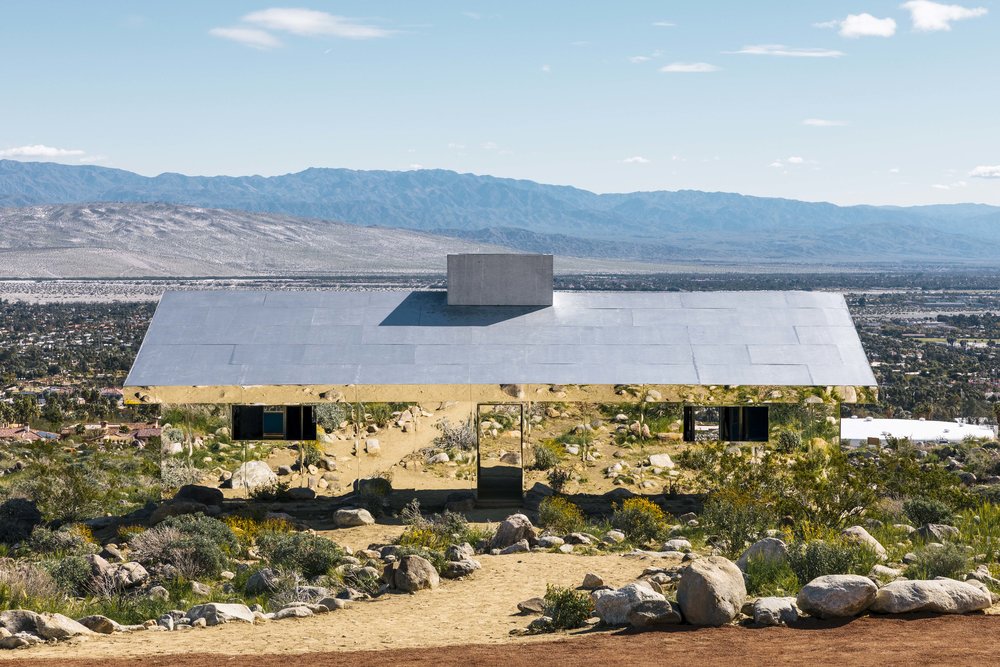
Doug Aitken: Mirage
His Palm Springs work “Mirage” — better known as the Desert X mirror house — represented a kind of distillation of the essence of a ubiquitous but unremarkable structure. “If I remove the contents,” Aitken says, “the things that make it human, what’s left are all transitional spaces. It becomes, not itself, but rather everything around it. It’s no longer static.”
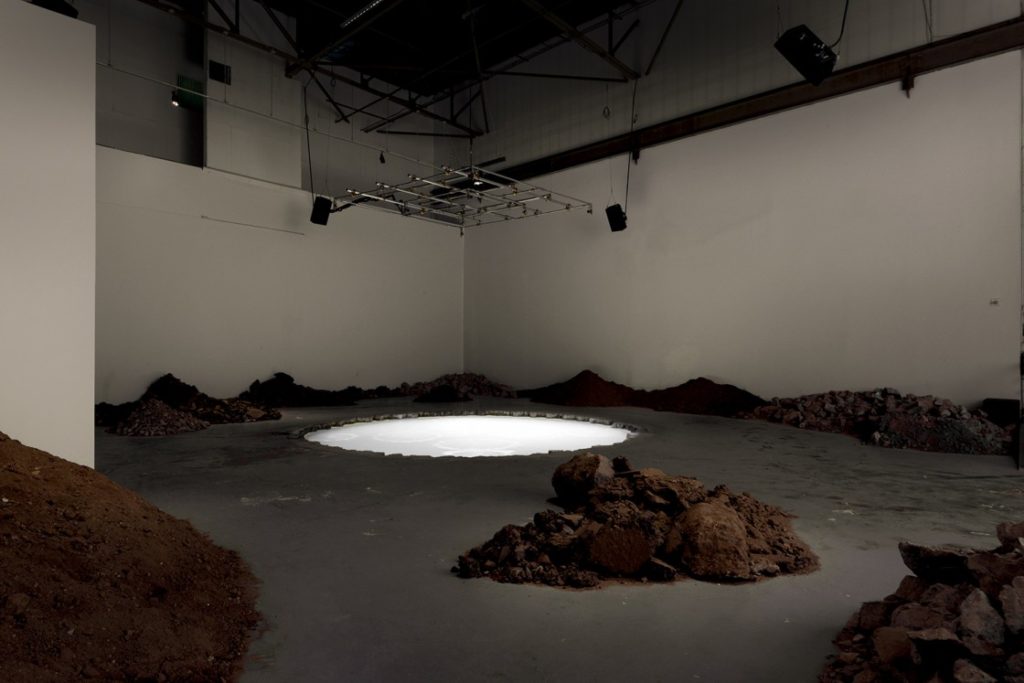
Doug Aitken: Electric Earth installation view at MOCA (Joshua White)
One could argue he did the same with the concrete floor of MOCA Geffen which he “excavated” for a project during his survey there a couple of years ago, which calls a variety of L.A. archaeology. As well, his special project during Frieze Week earlier this year, “Don’t Forget to Breathe,” in which he installed a series of kinetically illuminated figurative sculptures in an empty strip mall space on Santa Monica Boulevard, across from his gallery home at Regen Projects. Similarly to the conceptual and aesthetic elevation of a gated community in the desert, this activation created a surprising and active node for unexpected mindful attention and shared experience.
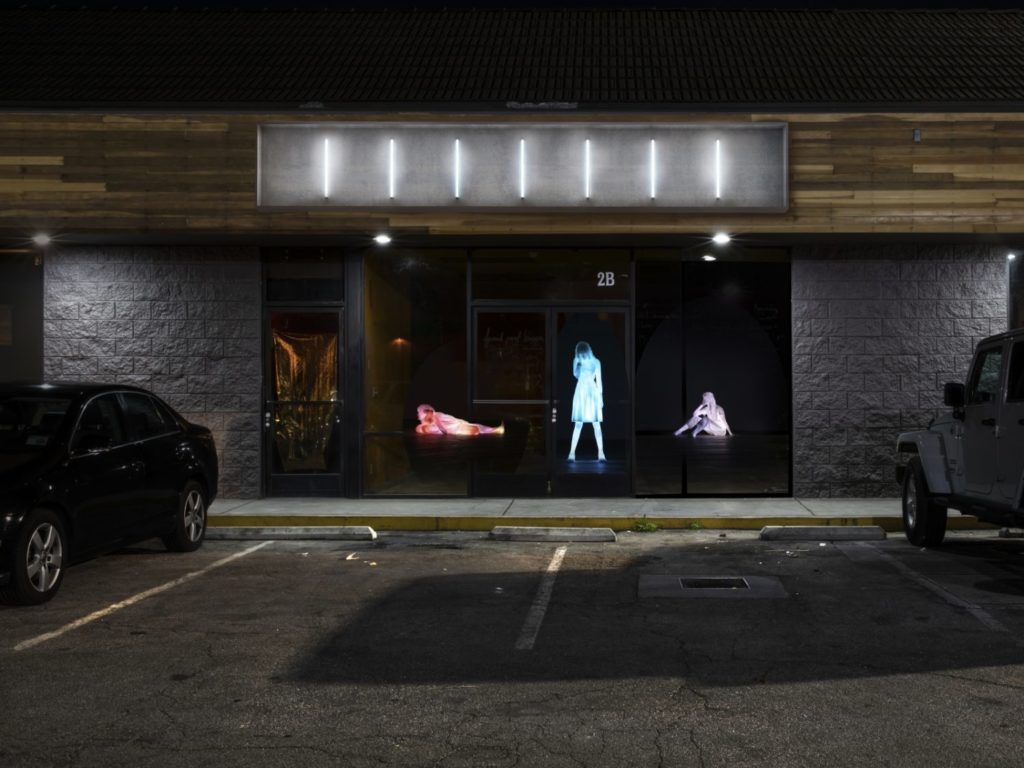
Doug Aitken: Don’t Forget to Breathe (Regen Projects)
While these projects certainly subvert the dominion of the “white box” gallery space, none more so than the “Station to Station” on-board train project, a sort of rolling performance system punctuated with one-night micro-festivals along the way. Or, for that matter, “Underwater Pavilions,” which was installed off the coast of Catalina, and which required scuba certification to visit. More recently, he created a project for an art foundation in Connecticut which linked several of their satellite sculpture parks along a hot air balloon route, at which cultural gatherings attended their landings.
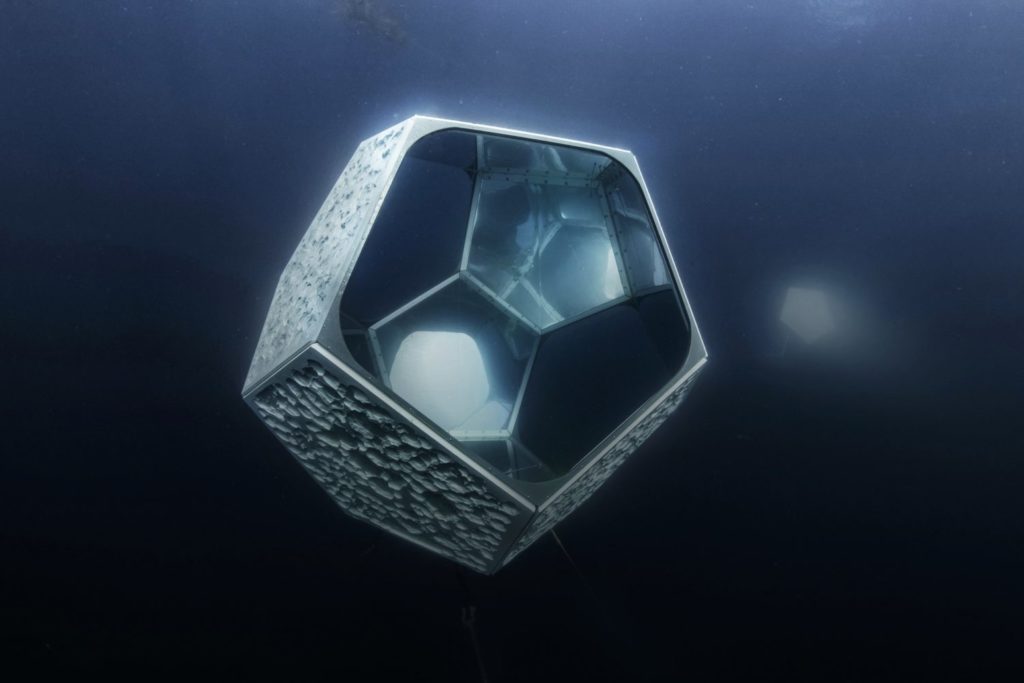
Doug Aitken: Underwater Pavilions
In all these and other projects in this mode, Aitken is betting that we long to escape our comfort zones as much as he does. Our own will to adventure is as essential to the success of Aitken’s work as anything he accomplishes even with his advanced skills and masterful collaborators. “Pull over! Ask questions,” he says. He’s interested in, “the possibility for art to be a discovery, for the viewer to seek it out, to bring themselves to it.” Even if that means learning to scuba.
“Art is viewed so often within predetermined physical parameters that inhibit cultural expressions,” Aitken observes. “I am interested in different parameters. In weightlessness and depth perception, color shifts, a sense of letting go, a state of constant flux. How much greater is the world than anything we could create synthetically. Working this way has shattered what I thought I knew about the world. I want to see how far we can take it — philosophy, material, location. I’m restless.”
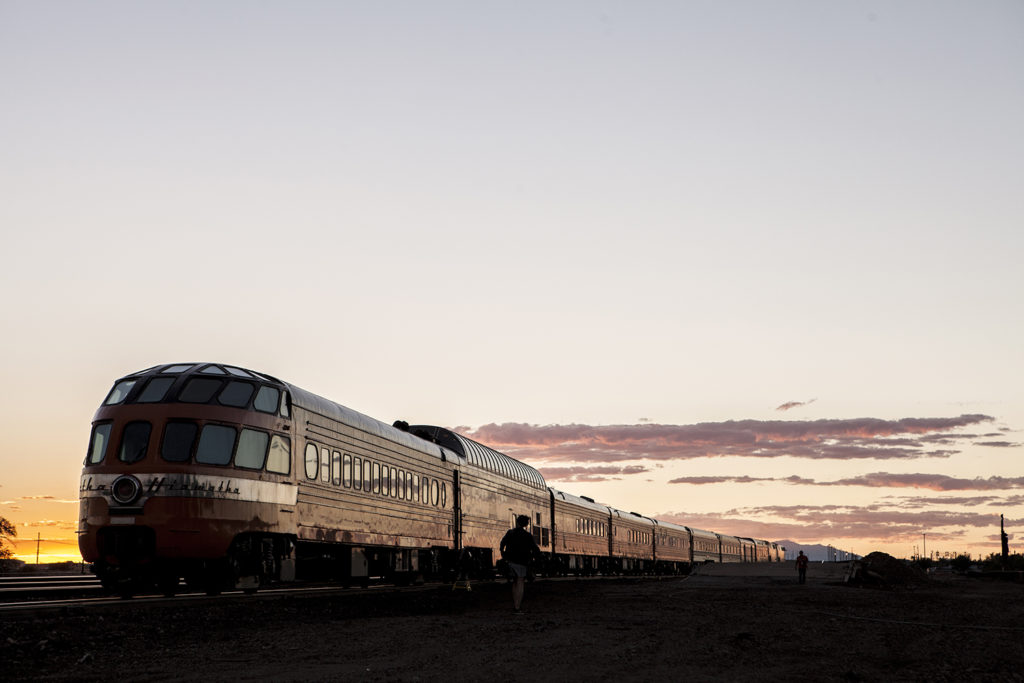
Doug Aitken: Station to Station, train in Winslow, Arizona (Mara Mckevitt)
Advertising disclosure: We may receive compensation for some of the links in our stories. Thank you for supporting LA Weekly and our advertisers.

